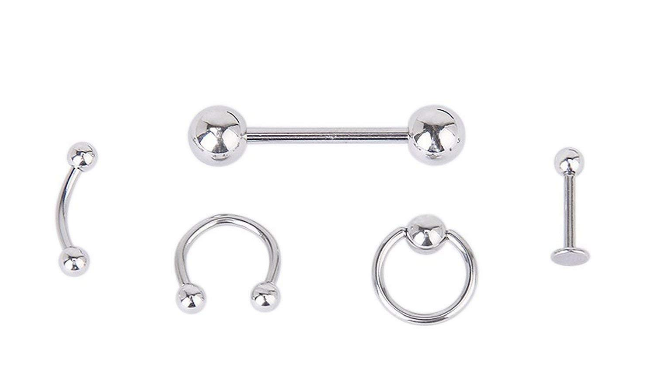Difference Between Polarized vs. Nonpolarized Sunglasses

There are many different types of sunglasses available in the market; however, all these sunglasses commonly have two types of lenses polarized and nonpolarized. Not everyone knows the difference between polarized vs. nonpolarized sunglasses. This is why we are here with a complete guide on polarized vs. nonpolarized sunglasses.
Keep scrolling to find out which type of lenses are right for you.
Difference Between Polarized vs. Non-Polarized
Polarized vs. nonpolarized sunglasses help darken the bright day view, which is the only similarity these both share.
Polarized lenses will help reduce the reflection, glare and make your daytime driving easier and safer. With all the benefits come to some disadvantages as well, which we will share with you below.
Here we have laid out some of the common key differences between polarized vs. nonpolarized sunglasses to help you pick the right shades for you.
Read More- Some of The Best Foods For Eye Health And Eyesight
Outdoors
The biggest noticeable difference between polarized and nonpolarized lenses appears when you go outdoors.
Polarized lenses have a special coating that makes them anti-reflective, reducing reflection, glare, and haze. When looking at the right angle, polarized lenses will help you see through a lake or ocean water reflection and below the water. Polarized sunglasses are perfect for fishing and boating activities.
The anti-glare properties of polarized sunglasses make them perfect for scenic viewing and nature hikes. This coating increases the contrast and makes the sky appear deeper blue. If You suffer from light sensitivity, these are perfect lenses for you.
Driving
Polarized sunglasses are a lifesaver during sunny daytime driving when the sunlight is hitting you right in the face and interfering with your vision. These sunglasses help to filter the sunlight that reflects off snow, road, and windshields and help to neutralize it all. You will experience a safe driving experience free from glare and reflection.
Polarized sunglasses work best when the day is brighter as compared to low contrast on a cloudy day. One thing to note is that driving with polarized sunglasses in icy or snowy situations is less safe in certain situations as compared to nonpolarized alternatives. Any breaking ice patch which is rarely visible will become even more difficult to see with polarized sunglasses.
Screen usage
Using electronic devices with digital screens may appear different when viewing through polarized lenses.
For instance, screens may appear a little faded or dark depending on the angle from which you are viewing. Nonpolarized lenses do not cause visual distortion.
If you experience strain due to looking at digital devices, you need to talk to your eye care professional before buying polarized glasses. As your doctor may suggest, you to wear anti-blue light glasses to make it easier for your eyes.
prescription and price
Polarised vs. nonpolarized sunglasses are both available with and without prescription.
Polarized lenses involve additional charges on top of basic lenses in some cases. Some manufacturers include polarization effects in standard lenses as well without any additional charge.
Read More- Best Bathroom Lighting Ideas To Make Bathroom More Stylish
Benefits and Disadvantages of Polarized Lenses:
Advantages
Superior quality sunglasses mostly include polarized lenses. Below are some of the advantages of using polarized sunglasses:
- Improves visual comfort
- Improves visual clarity and contrast
- Allows for true perception of colors
- Reduces eye strain
- Reduces reflections
- eliminates glare
Disadvantages
Most polarized lenses make the best choice for people who are concerned about glaze and sunlight. However, there are some people who cannot wear polarized lenses because it makes them feel disoriented or dizzy and creates a 3-D effect.
For such individuals, there might be photoreceptor cells at the back of the eyes which pick up vertical light and signal differently than the rest of us. If you face the same problem, you can instead go for tinted sunglasses. There are some jobs in which people are required to read digital numbers on liquid crystal displays. In these instances wearing polarized lenses can interfere with the number visibility.
How to Tell if Lenses Are Polarized?
Both polarized and nonpolarized lenses appear the same, which is why you should always look for the label” polarized” to confirm. You can also look at the reflective surface of the lens by turning at 90 degrees. You will notice a bright reflection of the lens is polarized.
You can also hold the lens against a bright LED screen. The screen will appear darker when viewed through a polarized lens.
Final Words:
Polarized lenses help in tackling the discomfort caused to vision due to bright light; however, these perform the same as nonpolarized lenses when filtering the UV light. If you go outdoors regularly, then polarized and nonpolarized lenses will both give you UV protection. If you like to view extra contrast and colors, you can use polarized lenses.
Keep in mind that polarized lenses do not perform the same as nonpolarized lenses when viewing digital screens. Polarized lenses interfere with your vision clarity when using electronic devices. Also, distinguishing shiny ice patches when skiing, walking after snowfall becomes difficult in the polarized lense because they reduce glare caused by sunlight.
However, these can help in reducing your eye strain, reflection and improve performance when the sunlight is too bright. When the weather is cloudy and overcast, nonpolarized sunglasses will work best and protect your eyes from UV light.






